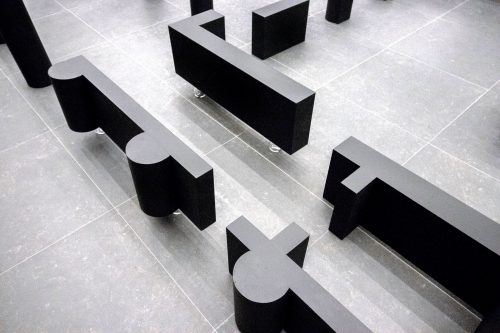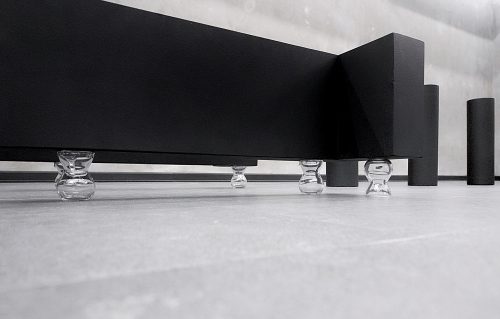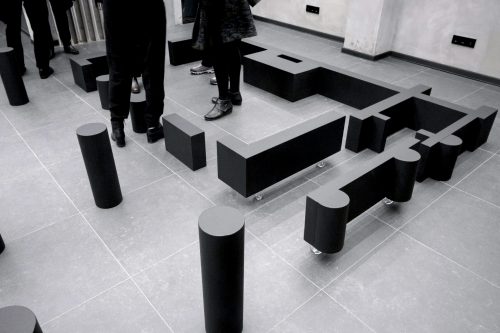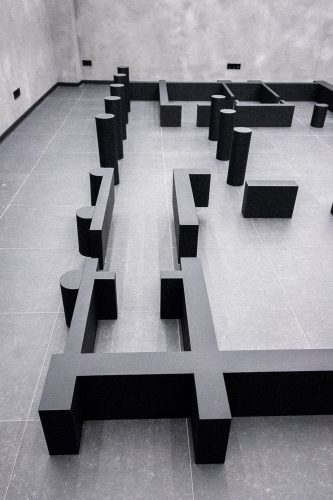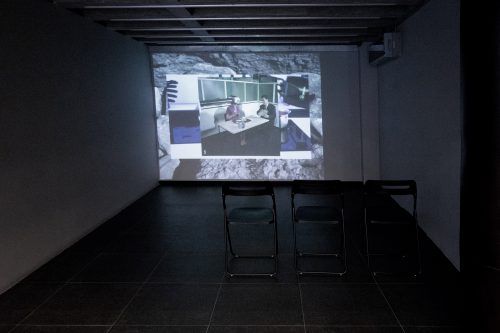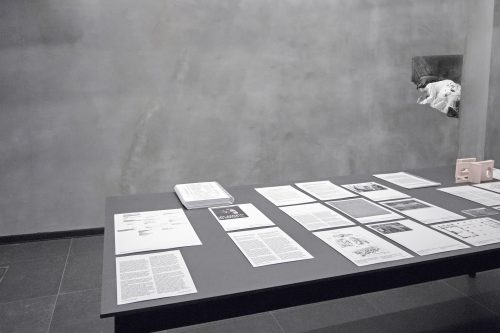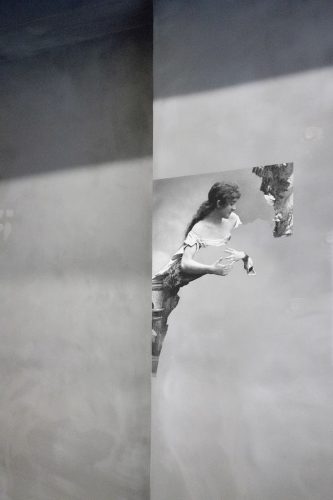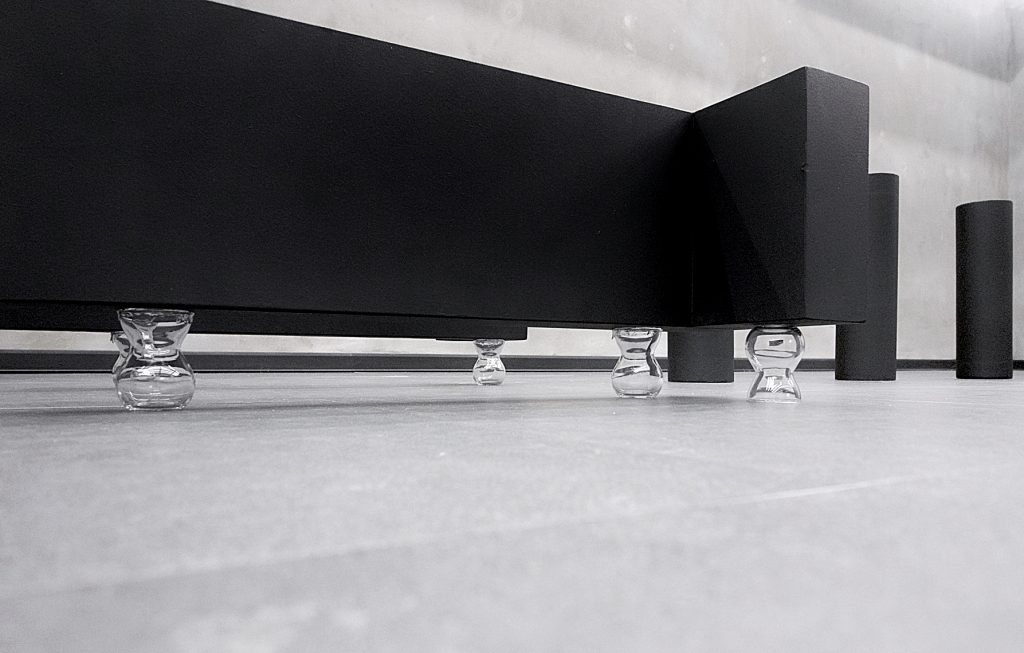
Installation, MDF, tee glasses, prints, text, video 2018
8 images  The model fragment results from a long-term research into (anti-)utopian projects that, informed by feminist theories and practices, have reimagined modern (domestic) space. It is part of a collection and speculation on houses and scenes that subtract from a given set of rooms, actors, and functions: these speculations remove the kitchen from the apartment, Romeo from Romeo and Juliet, the state from democracy, the patriarchy from almost any formation. Following a method of subtraction (n minus 1), they aim at a methodological activation of emancipatory ideas and practices to reshape our shared spaces.
The model fragment results from a long-term research into (anti-)utopian projects that, informed by feminist theories and practices, have reimagined modern (domestic) space. It is part of a collection and speculation on houses and scenes that subtract from a given set of rooms, actors, and functions: these speculations remove the kitchen from the apartment, Romeo from Romeo and Juliet, the state from democracy, the patriarchy from almost any formation. Following a method of subtraction (n minus 1), they aim at a methodological activation of emancipatory ideas and practices to reshape our shared spaces.
Modernism has long been questioned for its grandios utopian aspirations regarded as bound up with paternalistic, colonial, and totalitarian attitudes. The n-1 drafts formulate not modernist major projects but concepts of minor operations that however allow for new spatial connections and relations. In that they provide the ground on which we might evolve more open social, political, and aesthetic forms of living together.
The House Alice Built responds to the Kitchenless House (1915) by architect Alice Constance Austin: a residential building that was designed without a kitchen for a socialist community in California at the beginning of the 20th century. The architect eliminated the kitchen from the private dwelling, in order to communalize it. A central kitchen, serving the whole community, should instead be operated through paid professionals. The intention was to change not just the life of women and their situation of unpaid and invisible housework but also to question the social relations between the community members and their environment. The house was never fully realized, and the community existed only between 1913 and 17.
